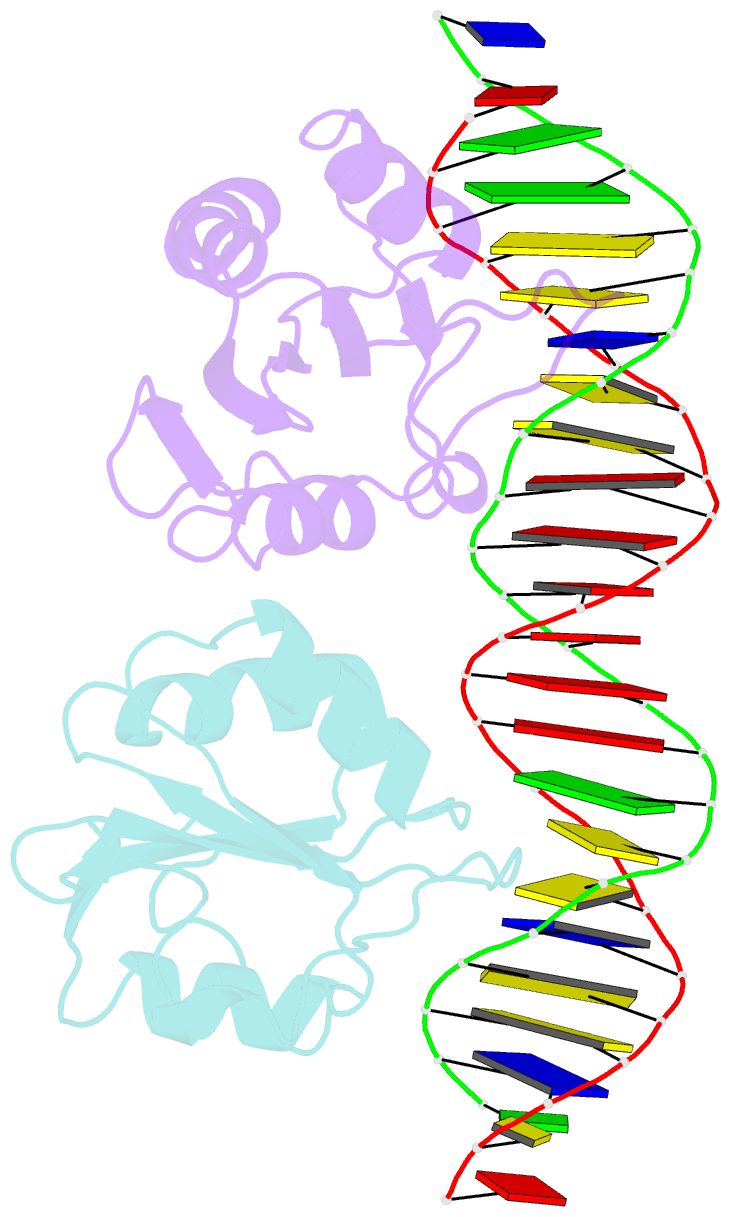Summary information and primary citation
- PDB-id
- 4fgn; SNAP-derived features in text and JSON formats;
DNAproDB
- Class
- DNA binding protein-DNA
- Method
- X-ray (3.2 Å)
- Summary
- Crystal structure of the sv40 large t-antigen origin bining domain bound to site i DNA
- Reference
- Meinke G, Phelan PJ, Harrison CJ, Bullock PA (2013): "Analysis of the Costructure of the Simian Virus 40 T-Antigen Origin Binding Domain with Site I Reveals a Correlation between GAGGC Spacing and Spiral Assembly." J.Virol., 87, 2923-2934. doi: 10.1128/JVI.02549-12.
- Abstract
- Polyomavirus origins of replication contain multiple occurrences of G(A/G)GGC, the high-affinity binding element for the viral initiator T-antigen (T-ag). The site I regulatory region of simian virus 40, involved in the repression of transcription and the enhancement of DNA replication initiation, contains two GAGGC sequences arranged head to tail and separated by a 7-bp AT-rich sequence. We have solved a 3.2-Å costructure of the SV40 origin-binding domain (OBD) bound to site I. We have also established that T-ag assembly on site I is limited to the formation of a single hexamer. These observations have enabled an analysis of the role(s) of the OBDs bound to the site I pentanucleotides in hexamer formation. Of interest, they reveal a correlation between the OBDs bound to site I and a pair of OBD subunits in the previously described hexameric spiral structure. Based on these findings, we propose that spiral assembly is promoted by pentanucleotide pairs arranged in a head-to-tail manner. Finally, the possibility that spiral assembly by OBD subunits accounts for the heterogeneous distribution of pentanucleotides found in the origins of replication of polyomaviruses is discussed.





